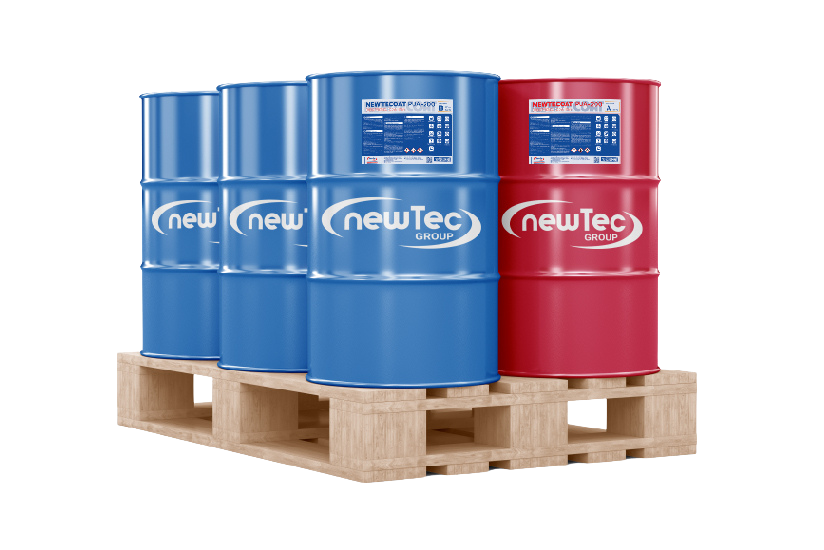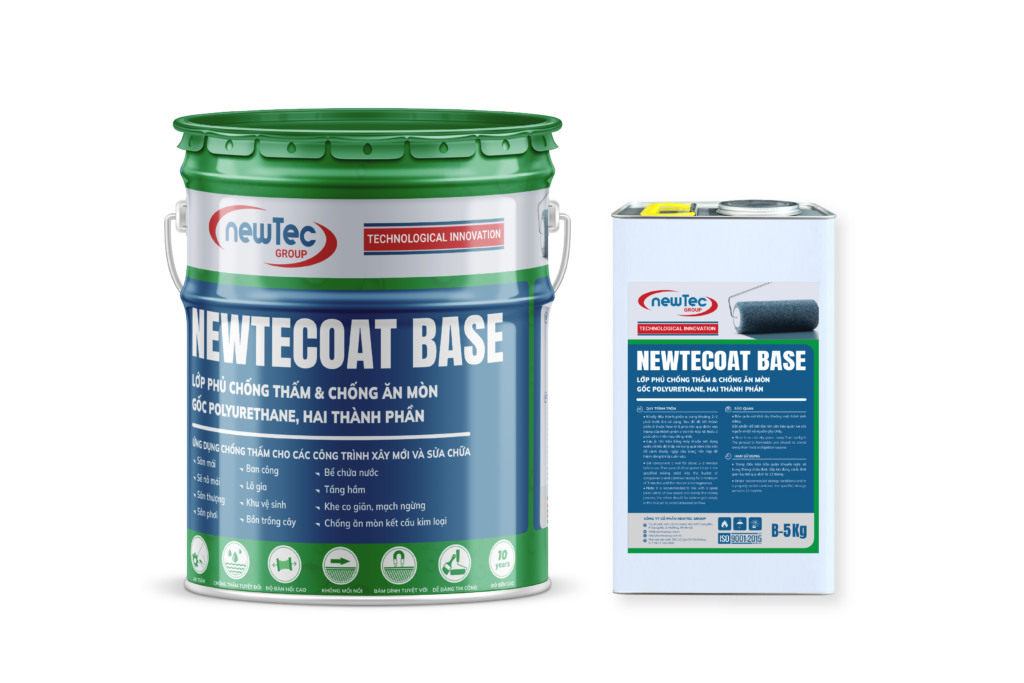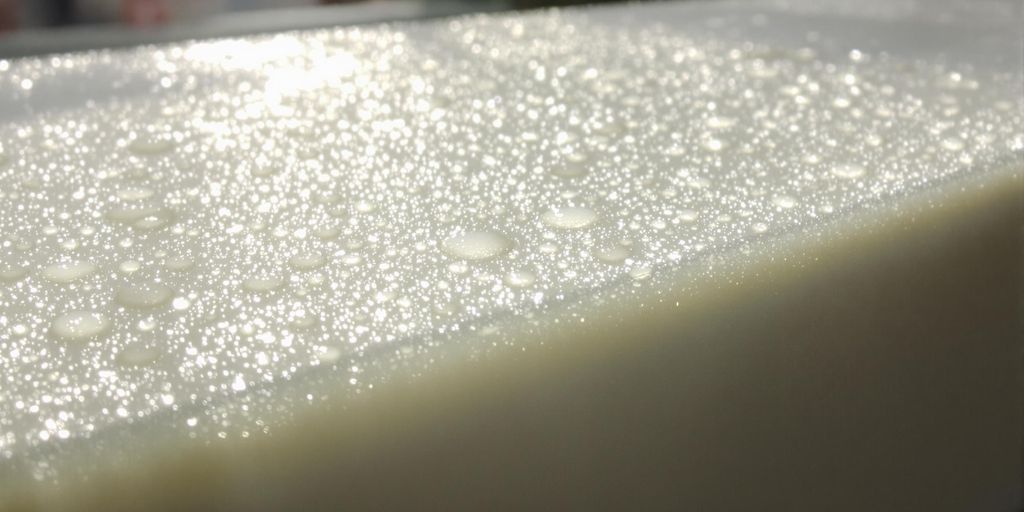When it comes to the question, “Is polyurethane foam waterproof?” the answer isn’t as straightforward as you might think. Polyurethane foam is known for its versatility and durability, but its relationship with water can be a bit tricky. While it can resist water to some extent, it’s not completely waterproof. In this article, we’ll break down what you need to know about polyurethane foam’s water resistance, its various types, and how it performs in different applications.
Key Takeaways
- Polyurethane foam is water-resistant but not fully waterproof.
- Closed cell foam is better at resisting water than open cell foam.
- Water resistance can vary based on foam density and environmental factors.
- Different tests measure how much water foam can absorb over time.
- Proper care and maintenance can help extend the life of foam exposed to moisture.
Understanding Polyurethane Foam’s Water Resistance
What Is Polyurethane Foam?
Polyurethane foam is everywhere, right? Couches, car seats, even the insulation in your walls. It’s a polymer made by reacting an isocyanate and a polyol. The cool thing is, you can tweak the ingredients to get foams with totally different properties. Some are super squishy, others are rigid. This versatility is why it’s so popular. It’s not just one thing; it’s a whole family of materials. Understanding the basics helps when we talk about how it handles water.
How Does It Repel Water?
Okay, so here’s the deal: polyurethane foam isn’t naturally waterproof. Its ability to resist water depends a lot on its cell structure. Think of it like this: some foams have tiny, closed compartments (closed-cell), and others have open ones (open-cell). The closed-cell stuff is better at keeping water out because there’s nowhere for the water to go. The open-cell? Not so much. It’s like a sponge. But even closed-cell foam isn’t perfect; given enough time or pressure, water can still get in. You can use water-based polyurethane to help with this.
Common Misconceptions About Water Resistance
One big mistake people make is thinking all polyurethane foam is waterproof. It’s not! It’s usually water-resistant, which means it can repel water to some extent, but it’s not impenetrable. Also, the level of resistance can change over time. Things like UV exposure, temperature, and even just general wear and tear can affect how well it keeps water out. So, while your spray foam might seem great at first, it’s worth keeping an eye on it.
It’s important to remember that water resistance isn’t the same as being waterproof. Water-resistant materials can slow down water penetration, but they won’t stop it completely under all conditions. This distinction is key when choosing materials for specific applications.
Types Of Polyurethane Foam
Open Cell Foam Characteristics
Open cell polyurethane foam is like a sponge – it’s soft, flexible, and air passes through it easily. Think of it as having a bunch of tiny, interconnected bubbles that aren’t fully sealed. This makes it great for things like cushioning where you want some give and breathability. However, because of these open cells, it absorbs water pretty readily. It’s not the best choice if you need something waterproof. Open-cell foam is often found in furniture cushions and soundproofing applications.
- Highly flexible and soft.
- Excellent sound absorption properties.
- Lower density compared to closed-cell foam.
Closed Cell Foam Characteristics
Closed cell polyurethane foam, on the other hand, is structured differently. Each cell is completely sealed off from the others, creating a barrier against air and water. This makes it much more rigid and dense than open cell foam. Because of its structure, it’s a better insulator and offers superior water resistance. It’s often used in applications where moisture is a concern, such as in flotation devices or insulation for refrigerators. The closed-cell structure also gives it higher structural integrity.
- High resistance to water absorption.
- Excellent thermal insulation properties.
- Greater structural strength and rigidity.
Comparative Water Resistance
When it comes to water resistance, open and closed cell polyurethane foams are worlds apart. Open cell foam soaks up water like, well, a sponge. Closed cell foam, thanks to its sealed structure, does a much better job of keeping water out. This difference is important when choosing the right type of foam for a specific application. For example, if you’re building something that will be exposed to the elements, closed cell foam is the way to go. If water resistance isn’t a major concern, open cell foam might be a more cost-effective option. Consider the PU foam properties when making your choice.
The key difference lies in the cell structure. Open cells allow water to penetrate, while closed cells create a barrier. This impacts not only water resistance but also insulation capabilities and overall durability.
To illustrate the difference, here’s a simple comparison:
| Feature | Open Cell Foam | Closed Cell Foam |
|---|---|---|
| Water Resistance | Low | High |
| Density | Low | High |
| Air Permeability | High | Low |
| Thermal Resistance | Lower | Higher |
Water Absorption Tests
ASTM-Standard D570 Overview
Okay, so when we talk about how much water polyurethane foam can handle, we often turn to a standard test called ASTM D570. Basically, it’s a way to see how much water a material absorbs over a certain amount of time. This test is pretty important because it gives us a consistent way to compare different types of foams and see which ones hold up better against water. It’s not perfect, but it’s a good starting point.
Testing Methods for Water Resistance
There are a few ways to test how well polyurethane foam resists water. The most common involves soaking a sample of the foam in water for a set period (usually 24 hours or even a week) and then measuring how much its weight increases. The percentage increase in weight tells you how much water the foam absorbed. Other tests might look at how water affects the foam’s properties, like its strength or shape. Here’s a quick rundown:
- Immersion Test: Soak the foam, weigh it before and after.
- Humidity Test: Expose the foam to high humidity and check for changes.
- Spray Test: Spray water on the foam and see how it beads or soaks in.
It’s important to remember that these tests are done under controlled conditions. Real-world conditions can be much harsher, with things like temperature changes, UV exposure, and chemicals affecting how the foam behaves.
Results of Water Absorption Tests
So, what do these tests actually show? Well, it depends on the type of foam. Closed-cell foams generally absorb very little water, while open-cell foams can absorb quite a bit more. The density of the foam also plays a big role; denser foams tend to be more water-resistant. The water absorption test results are usually expressed as a percentage of weight gain after being submerged in water. For example, a closed-cell foam might show a weight gain of less than 1%, while an open-cell foam could be 10% or more. It’s all about understanding what those numbers mean for your specific application. Table 4 presents data on the water absorption and resistance of polyurethane (PU) resins made with castor oil, detailing variations in the amounts of catalyst and blowing agent used in the preparation process.
Applications Of Polyurethane Foam

Use In Construction
Polyurethane foam has become a staple in the construction industry, and for good reason. Its versatility and insulating properties make it ideal for a wide range of applications. One of the most common uses is in spray foam insulation, which can seal gaps and cracks, preventing air leaks and reducing energy costs.
- Sealing windows and doors to prevent drafts.
- Insulating walls and roofs for thermal regulation.
- Creating a barrier against moisture and pests.
Polyurethane’s ability to conform to irregular shapes makes it perfect for older buildings or structures with unique architectural designs. It fills every nook and cranny, providing a continuous layer of insulation that traditional materials often can’t match. This leads to better energy efficiency and a more comfortable indoor environment.
Polyurethane is utilized in industrial buildings and parking garages for waterproofing and chemical resistance, particularly in factory floors, ceilings, and ramps.
Use In Furniture
From sofas to mattresses, polyurethane foam is a key component in furniture manufacturing. Its ability to provide cushioning and support makes it a popular choice for seating and bedding. The density and firmness of the foam can be adjusted to create different levels of comfort, catering to a variety of preferences. Memory foam, a type of polyurethane foam, is especially prized for its ability to conform to the body and relieve pressure points.
- Cushioning for sofas and chairs
- Mattress and pillow construction
- Car seat padding
Use In Insulation
Polyurethane foam is a top-tier insulation material, offering excellent thermal resistance. Both open-cell and closed-cell foams are used, each with its own advantages. Closed-cell foam, in particular, is known for its high R-value and resistance to moisture, making it suitable for applications where water resistance is important. Spray polyurethane foam insulation creates strong, airtight barriers, which makes it the perfect choice for home insulation.
- Reduces energy consumption by minimizing heat transfer.
- Provides a barrier against noise pollution.
- Helps maintain a consistent indoor temperature.
| Foam Type | R-Value (per inch) | Water Resistance | Air Sealing | Common Uses |
|---|---|---|---|---|
| Open-Cell | 3.5 – 4.5 | Low | Good | Interior walls, soundproofing |
| Closed-Cell | 6 – 7 | High | Excellent | Exterior walls, roofs, below-grade insulation |
Factors Affecting Water Resistance

Density Of The Foam
The density of polyurethane foam plays a big role in how well it resists water. Generally, denser foam has better water resistance. Think of it like this: the more material packed into the same space, the less room there is for water to sneak in. Low-density foam tends to have larger cells and more air pockets, which can absorb water more easily. Higher density foams, especially closed-cell ones, have smaller, more compact cells that make it harder for water to penetrate. It’s not just about density, though; the type of cell structure (open vs. closed) also matters a lot, as we’ve discussed before.
Environmental Conditions
Where the foam is used makes a difference. Temperature and humidity can really mess with foam’s water-resistant properties. For example:
- High humidity environments can lead to increased water absorption over time, even in closed-cell foams.
- Temperature fluctuations can cause the foam to expand and contract, potentially creating small cracks or openings that allow water to enter.
- Exposure to UV radiation from sunlight can degrade the foam, making it more brittle and less water-resistant.
Basically, if you’re using polyurethane foam in a place that’s constantly wet, hot, or exposed to the sun, you’ll need to take extra precautions to protect it.
Duration Of Water Exposure
How long the foam is exposed to water is a pretty obvious factor, but it’s worth talking about. Even the most water-resistant foam will eventually absorb some water if it’s left soaking long enough. It’s like a sponge – it might take a while, but it’ll eventually get saturated. This is especially true for open-cell foams, which are designed to absorb liquids. Closed-cell foams hold up better, but prolonged exposure can still lead to water seeping in through imperfections or damaged areas. Long-term durability studies are important to consider.
Here’s a simple breakdown:
| Exposure Time | Effect on Foam
Maintenance And Care
Okay, so you’ve got polyurethane foam in your life, maybe in your furniture, insulation, or even some arts and crafts projects. Now what? Like anything, it needs a little TLC to last. Here’s the lowdown on keeping your foam in good shape.
Cleaning Polyurethane Foam
First things first, cleaning. Don’t just go at it with any cleaner you find under the sink. Polyurethane foam can be sensitive, and you don’t want to ruin it. Here’s what I usually do:
- Vacuum Regularly: A simple vacuum with an upholstery attachment can do wonders for removing dust and loose debris. Do this weekly, especially if it’s something like a couch cushion.
- Spot Clean Spills Immediately: The longer a spill sits, the harder it is to remove. Blot (don’t rub!) with a clean, damp cloth. For tougher stains, use a mild detergent diluted in water.
- Avoid Harsh Chemicals: Bleach, ammonia, and other strong chemicals can break down the foam. Stick to gentle, foam-friendly cleaners. I’ve had good luck with some enzyme-based cleaners for organic stains.
Protecting Foam From Water
While some polyurethane foams are more water-resistant than others, it’s always a good idea to protect them from excessive moisture. Here’s how:
- Use Waterproof Covers: For cushions or mattresses, invest in waterproof covers. They’re a lifesaver, especially if you have kids or pets.
- Improve Ventilation: If the foam is in an area prone to moisture, like a basement, make sure there’s good ventilation. A dehumidifier can also help.
- Avoid Direct Sunlight: Prolonged exposure to direct sunlight can degrade the foam over time, making it more susceptible to water damage. Use curtains or blinds to block the sun.
I once left a foam cushion outside during a rainstorm (totally forgot about it!). It took days to dry completely, and it never quite felt the same. Now I’m super careful about keeping my foam dry.
Repairing Water-Damaged Foam
So, you messed up and your foam got soaked? Don’t panic! Sometimes you can salvage it. If the water damage is extensive, it might be time to replace it, but here are some steps to try:
- Squeeze Out Excess Water: Get as much water out as possible by pressing down on the foam. You can use towels to absorb the water.
- Dry Thoroughly: Air dry the foam in a well-ventilated area. You can use a fan to speed up the process. Avoid using a dryer, as the heat can damage the foam.
- Disinfect: Once the foam is dry, spray it with a disinfectant to kill any mold or mildew that may have grown. Spray polyurethane foam is a good option for commercial roofs.
- Assess the Damage: If the foam is still smelly or discolored after drying, it may be too far gone. Consider replacing it to avoid potential health issues.
| Damage Level | Recommended Action |
|---|---|
| Minor | Cleaning and thorough drying |
| Moderate | Disinfecting and odor removal |
| Severe | Replacement of the foam is generally recommended |
Taking care of your polyurethane foam isn’t rocket science, but a little effort can go a long way in extending its lifespan and keeping it in good condition. Understanding the necessary maintenance steps is key to protecting your investment.
Alternatives To Polyurethane Foam
Other Water-Resistant Materials
Okay, so polyurethane foam isn’t the only game in town when it comes to keeping water out. There are a bunch of other materials that can do the job, some with their own unique advantages. Think about materials like:
- Extruded Polystyrene (XPS): This stuff is pretty good at resisting water absorption and is often used in construction. It’s rigid and can handle some pressure, making it a solid choice for below-ground applications.
- Closed-Cell Polyethylene Foam: Another closed-cell option, this one is flexible and can be used in packaging or as a sealant. It’s not as rigid as XPS but offers good water resistance.
- Silicone Foam: Silicone is naturally water-repellent, and silicone foam takes advantage of that. It’s often used in gaskets and seals where you need a reliable barrier against moisture. You can use Cushion Wrap Silk Film to protect it even more.
- Rubber Materials (EPDM, Neoprene): These are inherently waterproof and are used in a variety of applications, from roofing to wetsuits. They’re flexible and durable, but might not offer the same insulation properties as some foam options.
Comparing Performance
When you’re picking a material, it’s not just about whether it repels water. You’ve got to think about the whole package. How well does it insulate? How durable is it? What’s the cost? Here’s a quick rundown:
| Material | Water Resistance | Insulation | Durability | Cost |
|---|---|---|---|---|
| Extruded Polystyrene (XPS) | Excellent | Good | Good | Moderate |
| Closed-Cell Polyethylene Foam | Good | Fair | Fair | Low |
| Silicone Foam | Excellent | Fair | Moderate | High |
| Rubber (EPDM, Neoprene) | Excellent | Poor | Excellent | Moderate to High |
Choosing the right material really depends on what you’re trying to do. If you need something that’s super waterproof and can handle being buried underground, XPS might be your best bet. If you’re looking for something cheap and flexible for packaging, polyethylene foam could be the way to go. And if you need a high-performance seal, silicone foam or rubber might be worth the extra cost.
Cost Considerations
Let’s be real, price matters. Polyurethane foam is often chosen because it strikes a good balance between performance and cost. But depending on your project, other materials might actually be more cost-effective in the long run. For example, while silicone foam is expensive upfront, its long lifespan and superior water resistance could save you money on repairs or replacements down the road. Always factor in the total cost of ownership, not just the initial price tag. Consider the advantages and disadvantages of each material before making a decision.
Wrapping It Up
So, is polyurethane foam waterproof? Not really. It’s more accurate to say it’s water-resistant. Depending on the type, like closed-cell foam, it can handle moisture better than open-cell foam, which tends to soak it up. If you’re thinking about using it in a wet area, just keep in mind that while it can resist water to some extent, it’s not a foolproof solution. Always consider your specific needs and the environment where you plan to use it. In the end, understanding its properties can help you make the right choice for your project.
Frequently Asked Questions
Is polyurethane foam completely waterproof?
No, polyurethane foam is not completely waterproof. It is water-resistant, meaning it can resist water to some extent but can still allow water to pass through under certain conditions.
What types of polyurethane foam are there?
There are two main types of polyurethane foam: open cell foam and closed cell foam. Open cell foam has small air pockets and can absorb water, while closed cell foam is denser and does not let water in easily.
How does polyurethane foam resist water?
Polyurethane foam resists water through its structure. Closed cell foam has a tight structure that keeps water from getting through, while open cell foam has a looser structure that can let water in.
What tests are used to measure the water resistance of foam?
One common test is the ASTM-Standard D570, which measures how much water the foam absorbs over time. This helps to understand how water-resistant the foam really is.
Can polyurethane foam be used in outdoor applications?
Yes, closed cell polyurethane foam is often used outdoors because of its better water resistance. However, open cell foam is not recommended for outdoor use as it can absorb water.
How can I maintain polyurethane foam to prevent water damage?
To maintain polyurethane foam, keep it clean and dry. If it gets wet, dry it out immediately. You can also use protective covers or sprays to help keep water away.





You may also be interested in
Do You Have to Sand Between Coats of Polyurethane for a Flawless Finish?
When finishing wood, achieving that perfect shine can feel like a daunting task. One question
Apr
Is Polyurethane Foam Waterproof? Understanding Its Water Resistance Properties
When it comes to the question, “Is polyurethane foam waterproof?” the answer isn’t as straightforward
Apr
What is Polyurethane Paint Used For? Exploring Its Versatile Applications
Polyurethane paint is a versatile coating that has found its way into many industries and
Apr
Is Polyurethane Safe? Understanding the Risks and Benefits of This Versatile Material
Polyurethane is a popular material found in many everyday products, from furniture to insulation. But
Mar
What Does Polyurethane Do? Understanding Its Benefits and Applications in Woodworking
Polyurethane is a popular finish in woodworking, and for good reason. It offers a tough
Mar
Understanding What is Polyurethane Made Of: A Comprehensive Guide
Polyurethane is a material that shows up in a lot of everyday items, from furniture
Mar
What is Polyurethane Coating and Why You Should Consider It for Your Next Project
If you’re looking for a reliable way to protect surfaces, you might want to consider
Mar
Understanding What Is Polyurethane Foam Made Of: A Deep Dive into Its Composition and Production
Polyurethane foam is everywhere, from the cushions on your couch to the insulation on your
Mar